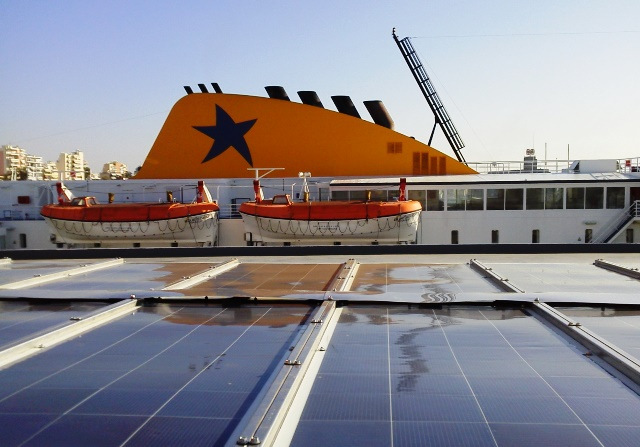By Wasana Nadeeshani Sellahewa
(Commonwealth) _ However, there will be economic losses, the industry won’t remain unharmed, and any recovery Over the past ten years, as governments, businesses, and the general public have worked to address the problems of air pollution, energy security, and climate change, a movement toward the use of renewable and alternative energy sources on land has gained steam. At sea, however, the transition to the broad use of alternative energy is still in its early stages. In recent years, the shipping sector has started to seriously consider how to use less fossil fuel and conduct business more sustainably. Globally, ship owners, shipping companies, and ship builders are now focused on the principles of green shipping, green logistics, and sustainable shipping. Additionally, a number of laws and programs are being introduced with the goal of lowering ship emissions.
The use of renewable energy is becoming more widely accepted as a component of the energy mix for the shipping industry, and as more technologies related to renewable energy are developed, the power of the wind and sun will probably play a significant role in assisting in reducing fuel consumption and emissions from ships.
In an effort to use less fuel, numerous Japanese ships were equipped with stiff sails in the 1980s. This was primarily caused by the oil crisis of the 1970s, which caused shortages and a sharp increase in oil prices. However, the crisis subsided and stiff sails lost their economic viability as prices dropped in the 1980s.
Solar power is a further means of reducing fuel use on board ships. Solar power is now a viable fuel reduction alternative for pleasure boats, ferries, and tourist vessels because to recent advancements in solar cell and photovoltaic (PV) module technologies. On big ships, however, the amount of fuel saved by using solar power alone is quite small. Therefore, it appears that a commercially feasible solar spacecraft is now impracticable.
A system that could harness the force of the wind and sun simultaneously may be preferable to having a ship with stiff sails or a ship with solar panels, wouldn’t it? Determining how to employ sails and solar panels on big propelled ships working in the hostile sea environment would be a difficult practical task to solve. However, the notion of mixing solar and wind power is not new; in the 1990s, an American patent was awarded for a solar-powered electric ship design that included a conventional soft sail connected with photovoltaic cells.
Any ship equipped with Aquarius MRE, including passenger ferries, cruise ships, bulk carriers, survey vessels, and tankers, will be able to harness the sun’s and the wind’s inexhaustible power.
In order to lessen hazardous emissions and fuel consumption, these hybrid powered ships will employ wind and solar power in combination as a source of energy and propulsion.
Teramoto Iron Works of Onomichi, Japan, is responsible for the manufacture and engineering design of the EnergySail in a nod to the past. In the 1980s, Teramoto Iron Works was one of the businesses producing JAMDA stiff sails. This forward-thinking business has a long history of producing high-quality goods for the maritime sector and is one of the few in the world to have produced and mounted sizable stiff sails on ships.
A compelling return on investment (ROI) proposal will be made available to ship owners and shipping businesses by Aquarius MRE’s mix of technologies. This, together with the advantages for the environment, will aid in the adoption of hybrid marine power technology by the maritime sector.
The idea of combining solar and wind power on ships is not futuristic, nor is it decades distant. The EnergySail and EnergySail ACS have successfully passed lab testing at Eco Marine Power, and sea trials with Aquarius MRE components have started. Before being mounted on a ship for sea trials, the first factory-produced EnergySail has been created and is undergoing testing at the Onomichi MTTC (Maritime Tech Test Center).











